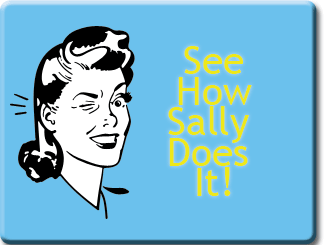What Is Social Marketing? Please note this toolkit is under revision. Created in 2007 this toolkit lacks the benefit of a social media strategy and contains outdated resources. 
The more we increase the active participation and partnership with young people, the better we serve them...and the more...we increase our public value to the entire community.
-- Carmen Martinez  Social marketing is the use of commercial marketing principles and techniques to improve the welfare of people and the physical, social and economic environment in which they live. It is a carefully planned, long-term approach to changing human behavior. Social marketing uses the same collection of tools to "sell" healthy behaviors that are used to sell jeans. There are four basic principles of commercial marketing. They are referred to as the "4 Ps". P1 - Product is what you are marketing. In social marketing the product is a behavior change or a shift in attitude. For example, a campaign may be designed to increase condom use or to convince adolescents that spreading rumors is harmful or dangerous.
P2 - Price is the cost. In social marketing, price is the cost of changing behaviors. It is difficult to price the personal costs of using a condom when the individual commits to a new behavior that had been identified as inconvenient, time consuming and embarrassing. The goal of social marketing is to reframe the recommended behavior change so that the consumer realizes that the benefits of change outweigh the efforts or costs.
P3 - Place is where and how the priority population can be reached. In social marketing, place represents all efforts to make the behavior change as easy as possible to a consumer. It might mean offering free or inexpensive condoms at convenient locations (i.e. schools, bars, or restrooms) or changing a clinic schedule to accommodate busy students.
P4 - Promotion is the ways used to notify the public about the change messages. Advertising is just one method to achieve this goal. A promotion campaign includes incorporating messages about the recommended behavior change into all existing programs in the community in order to reinforce the message on multiple levels.
Social marketing employs a fifth P that is not included in the commercial campaigns. This special component of social marketing is:
P5 - Policy is the intent to influence policy that will not be punitive but will promote positive behavior change.
Social marketing uses a commercial approach but for different outcomes. Below are some of these differences: Social Marketing
| Commercial Marketing
| Meets the needs of the priority population | Creates a need for the priority population
| Society and consumer profit
| Marketer profits more than consumer
| Organizations with similar goals cooperate
| Businesses with similar goals compete
| | Campaigns take longer to change behavior | Shorter time needed to sell a product | Comsumer involvement and commitment needed
| Shorter term commitment and involvement |
Social marketing research is usually more thorough than commercial research because facilitating enduring individual and social behavior change is complex. Why rely on a social marketing approach? impacts a significant portion of the priority population facilitates active behavior change over a period of time stimulates change with limited resources develops creative ideas community partnerships become assets that compensate for limited funds elevates the voice of the priority population and increases community identification influences policy and promotes positive social change
The approach works within limits! Social marketing is not always a success. If the attitudes and behavior changes you are encouraging are still not perceived as beneficial, acceptable and attainable by the priority population, it may not be worthwhile to develop a social marketing campaign at this time. In this situation, it is better to introduce a behavior change recommendation by developing connections with community and agreeing on a unified goal before planning a social marketing campaign. 
See How Sally Decides If a Social Marketing Campaign is Right for Her Organization Find resources for Your Social Marketing
Campaign in the Social Marketing Toolbox NEXT PAGE PREVIOUS PAGE |